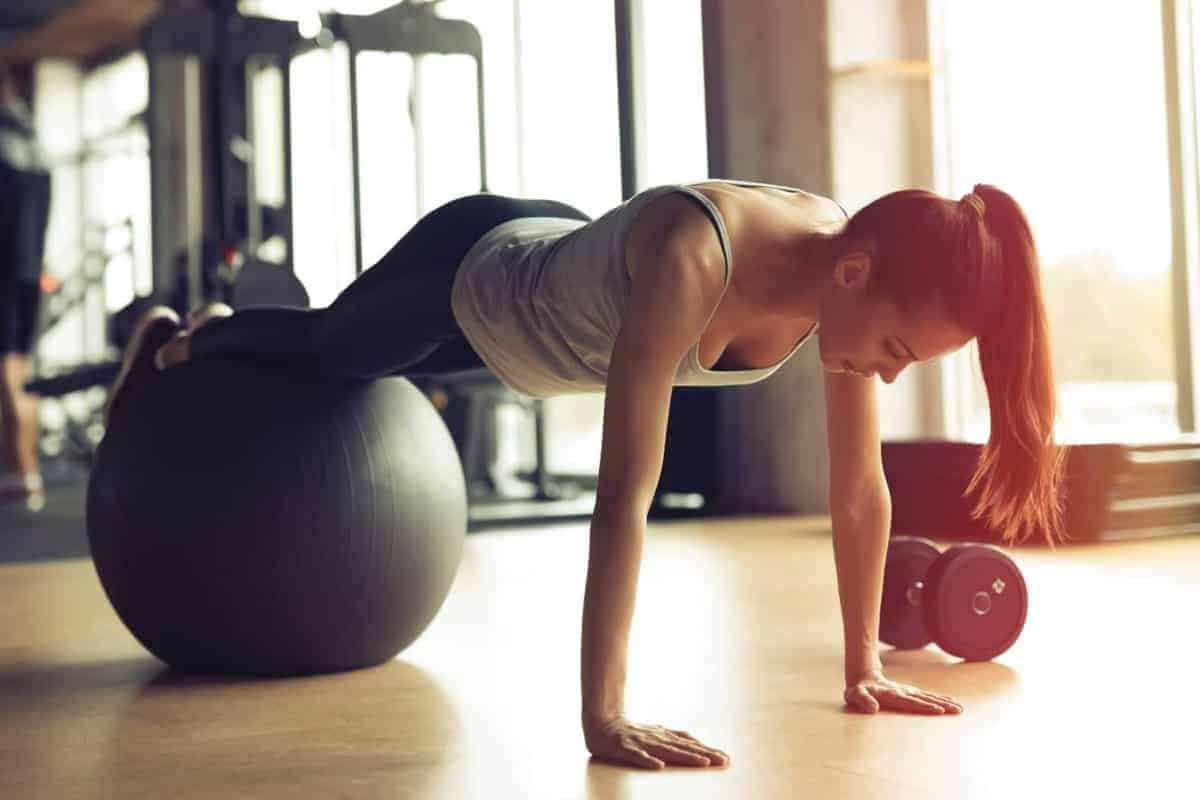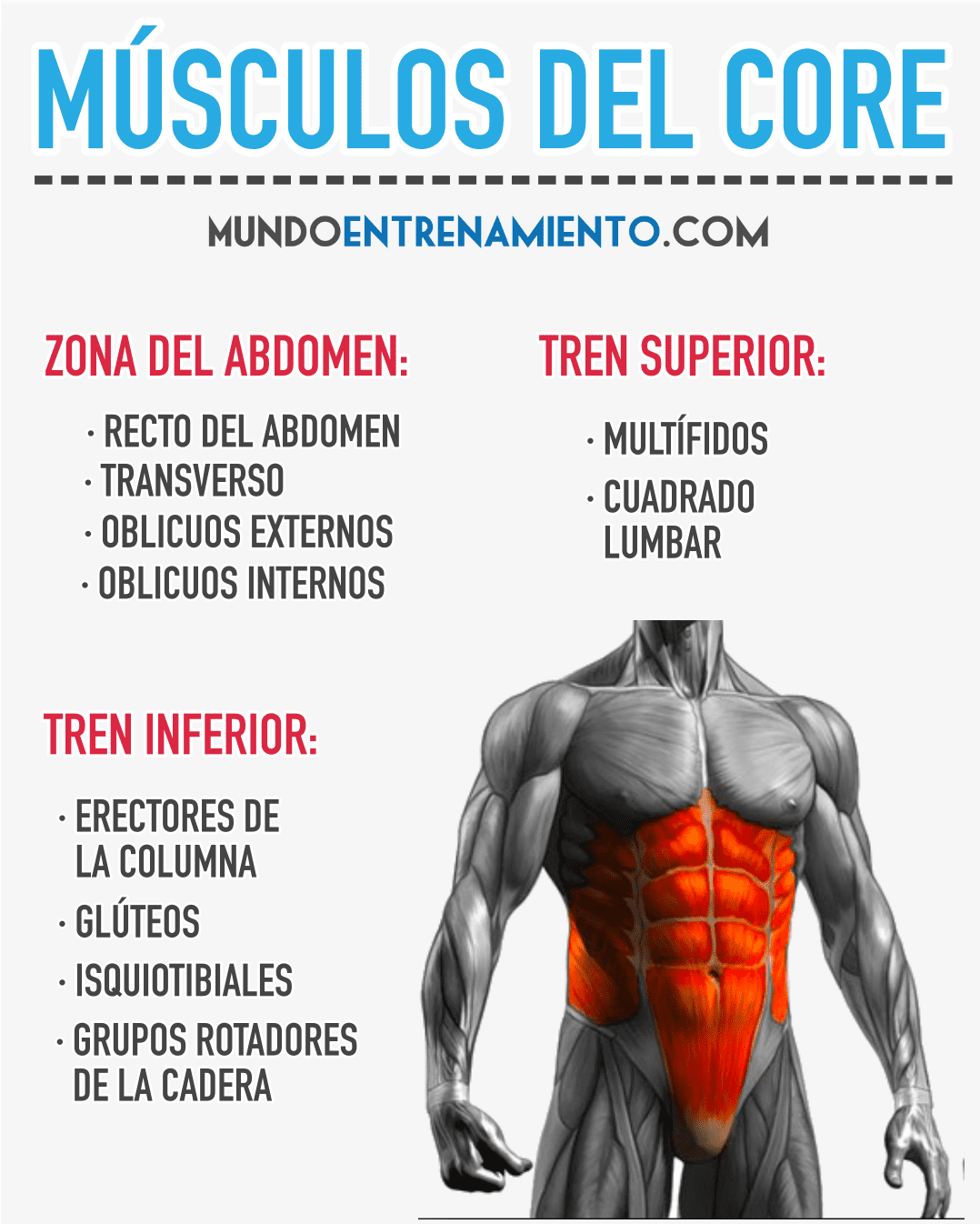Discover why core training is becoming increasingly important.
In terms of health, the importance of maintaining a healthy spine, stable, and its correct use (strengthening for both daily activities and physical-sport practice, movements, lifting loads, etc.); becomes central if we consider the current pace of life, where sedentary lifestyle predominates, and/or circumstantial sports activities that can cause injuries.
We identify the lower crossed syndrome (inhibited gluteus maximus and abdominals; contracted erector spinae and iliopsoas); as a common postural problem, derived from both sedentary lifestyle, work activities that involve a lot of sitting time, as well as morphological (and even genetic) conformation problems of individuals, which impact the quality of life, either by causing chronic pain or limiting mobility.
Importance of the core
The first and main function of the muscles involved in core training is the stabilization of the spine (this without ignoring other functions, such as the protection of the organs contained in the abdominal cavity, etc., but first things first!).
Here it is good to understand the importance of deconstructing (epistemologically dismantling) the classic purely “aesthetic” approach, that is; the one that conceives the execution mainly of abdominals like the “crunch”, to show off a flat and “ripped” abdomen; and move on to promote awareness of the preventive and protective function of the muscles involved in the entire core area of the human body (which of course exceeds that abdominal muscle hypertrophy we can show off at the beach).
Characteristics of core muscles
It is a muscle chain that both in daily routine and in sports actions, hardly functions in isolation.
It is also important to point out that the main characteristic of core training is to provide stability to the spine in almost all human actions involving movement.
While other muscles work together or individually to develop movement through eccentric and/or concentric actions; the core, through isometric actions, stabilizes the spine at mid-height, as it is the area that connects the lower body (the legs) with the upper body (examples are movements such as stopping, exerting force, turning or changing direction, etc.)
Muscles involved
Next, we will analyze the muscles involved in core training.
What muscles are we talking about when we refer to core training?
Although our selection is (like any selection) arbitrary, we can consider as main components when performing core training, without prejudice to leaving open the possibility of including any other, the:
- Rectus abdominis; transverse abdominis; obliques; quadratus lumborum, multifidus muscle (intertransversarii and interspinales); glutes; psoas; and Iliacus (it is worth noting that the latter, iliopsoas, mainly require almost continuous flexibility work, as they tend to contract and shorten due to overuse, “pulling” on the lumbar vertebrae where they insert, causing pain and predisposing to injuries).
Core training
Core training increases your balance and body stability. The training allows you to develop the abdominal, hip, pelvic, and lower back muscles. This allows for superior balance and motor control.
The knowledge an individual has about the functioning of their body, the musculoskeletal structure and functionality, will result in a global body formation, capable of enabling the correct use of muscle chains, the enhancement and use of conditional capacities, avoiding limiting injuries both for daily life and for the development of physical and sports activities.
Furthermore, core training only requires consistency, and not complex equipment or much time, so you can do it at home and/or include it as a warm-up for your favorite physical practice.
How to work the core of the abdomen?
The classic “crunches”; isometric planks (front and side); and not skipping the great forgotten in core strengthening work: the posterior chain of the lower back (with glute bridges, on one support or bipodal), and/or work that simulates movements similar to swimming in a prone position, will be essential in your routine.
Remember that you can use any type of material that generates instability, such as a bosu or a fitball. Below we show you two very interesting exercises to perform core training.
View this post on Instagram


